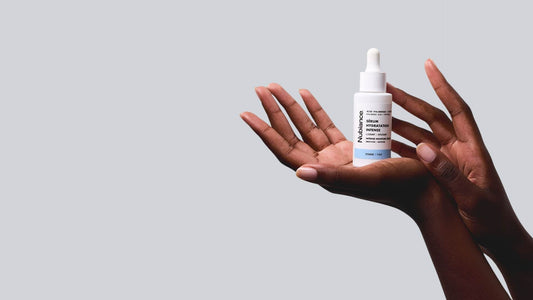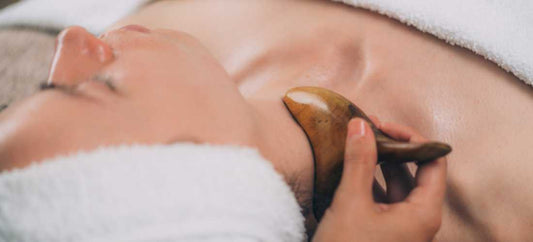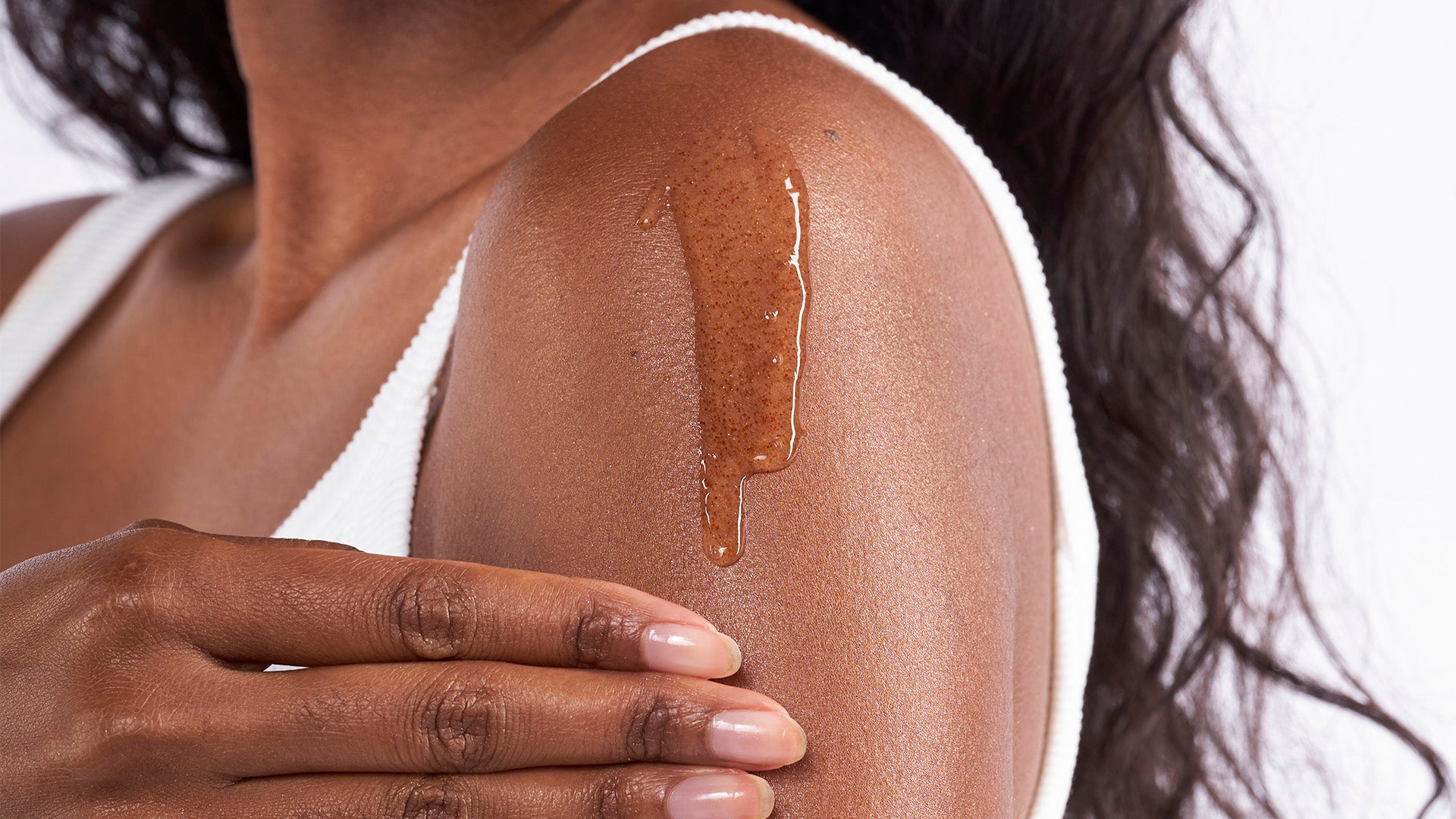
Brown spots after laser hair removal: what are the risks for black skin?
Partager
Hyperpigmentation after laser hair removal is quite common in people with black and mixed skin. Brown spots appear on the depilated area and are very unsightly, even impacting your well-being.
This is why it is important to take precautions before and after your laser hair removal and to be aware of the risks for your skin type. Also take advantage of Nubiance products to erase your brown spots.
Reminder regarding brown spots
A brown spot is by definition a modification by increase in the normal color of the skin, i.e. the phenomenon of hyperpigmentation of the skin . Brown spots generally appear in people over 40, after years of exposure to the sun. However, they can sometimes also be seen in younger people due to intense or prolonged exposure to UV rays. They are generally not dangerous for your health, but you must still remain vigilant.
These brown spots can be due to different factors, including:
- Direct and prolonged exposure to UV rays from sunlight, causing disruption of melanin production. We then speak of solar lentigos.
- Skin aging which modifies the pigmentation of the epidermis.
- A hormonal imbalance which can promote a change in skin pigmentation in the presence of UV rays. This can be due to an incorrectly dosed contraceptive pill, taking certain photosensitizing medications or even pregnancy , what is called the pregnancy mask.
- Pimples, mainly acne, whose scars can take on a dark shade.
- Pollution.
- Plant protection products and other xenobiotic products.
- The use of creams that have an oxidizing effect.
- Tobacco and alcohol consumption.
- Vitamin E deficiency.
Hyperpigmentation is a common skin problem that can impact quality of life and psychological well-being. In some cases, brown spots are irreversible and this change has a major impact on the quality of life of the people concerned: frustration, loss of self-confidence, signs of depression, etc. The appearance of brown spots is always poorly experienced by those who are affected. Especially since they can give the impression of being older.

Learn more about skin depigmentation .
Link between laser hair removal and brown spots
Laser Hair Removal Process
The process of laser hair removal is simple and effective. Its goal is to eliminate the root of the hair by attacking its melanin, called the principle of “selective photothermolysis”. The laser will therefore emit infrared rays to target the melanin concentrated in the hair and transform into heat to destroy the entire follicle.
The laser has a selective destruction capacity, because it will only attack very dark colors such as those of the hair, and, consequently, spare light skin. The wavelength of the light ray will be configured according to the phototype of the skin and the color of the hair.
The laser is particularly effective when the hair is growing, because it is during this period that the melanin is most concentrated. This is why it is important to do several sessions to ensure all hair is removed. Follicles in the resting phase are completely transparent and do not contain melanin, hence the ineffectiveness of the laser during this period.
The aesthetic doctor sets the power of the laser according to the skin tone and hair color. The darker the skin, the weaker the laser shot and the lighter the skin, the more powerful the laser shot.
People with dark skin generally have very black hairs, containing a lot of melanin, which helps guide the laser shot to the hair root, even with a lower power wavelength.
The thicker and blacker the hair, the faster it will be eliminated. Thus, laser hair removal ends up refining the hairs and gradually slowing down their manufacturing process, until it stops after 5 to 6 sessions.

Also read our article on shaving for women .
Risks of hyperpigmentation after laser
Inflammatory or post-inflammatory hyperpigmentation can follow a burn after laser hair removal. On darker skin, the professional will talk to you about hyperpigmentation and your skin will show brown spots. These pigmentation disorders usually take several months to resolve. On tanned or dark skin, the risk of burns is greater. If in doubt, tests should be carried out a few days before treatment, during the pre-consultation.
Hyperpigmentation after laser occurs most often on black and mixed skin. Indeed, even if all phototypes are eligible for laser hair removal, dark or dark skin requires special precautions because of the power of the devices. These must be handled by trained personnel to avoid any risk of burns and therefore post-laser brown spots in patients.
Also discover our article on how to remove hyperpigmentation spots .
Precautions to take before and after a laser hair removal session to reduce the risk of dark spots
Before laser hair removal, it is imperative to stop all excessive exposure to the sun during the two weeks preceding the session. The day before the session, it is also essential to shave the area in question so that the skin is not burned by the application of the laser.
Acne treatments or photo-sensitizing medications may be incompatible with laser hair removal. Anticoagulant medications can also cause side effects such as tissue microhemorrhages. Whatever treatment you follow, it is advisable to speak to your aesthetic doctor during your first consultation.
After a laser hair removal session, your skin may be slightly red and sensitive. It is therefore important to protect and pamper it to promote healing and prevent brown spots and other skin reactions. Here are the main actions to adopt:
- Apply a soothing and moisturizing cream to the treated areas, morning and evening for the first few days.
- Avoid exposing yourself to the sun or UV rays for one to two weeks and apply a high-factor sunscreen if you have no choice. UV rays can cause brown spots or burns on skin weakened by the laser.
- Avoid heat sources such as the sauna, hot baths, hammam, for a week after your permanent hair removal session. Heat can increase the risk of inflammation and hyperpigmentation.
- Respect the interval of a few weeks between each laser hair removal session, according to the recommendations of your aesthetic doctor. This period of time makes it possible to treat the hairs in the growth phase which are the most sensitive to the laser. This limits the risk of brown spots appearing after your laser hair removal .

Also read our article on hyperpigmentation of private parts .
The complete Nubiance range to combat hyperpigmentation spots
To erase your brown spots on both the face and body, Nubiance offers you the Complete Anti-Dark Spots Face and Body Range . Specially designed for black, dark and mixed skin, these products allow you to regain an even complexion and clear skin. Say goodbye to hyperpigmentation spots thanks to the combination of ingredients such as hexylresorcinol and vitamin B3. In one month, the results are already visible on your skin.
In this range, you will find all HRB-3 anti-stain products:
- The HRB-3 Anti-Dark Spot Radiance Serum which, with its AHAs, has a gentle peeling effect on pigment spots. This exfoliating treatment based on fruit acids effectively prevents and corrects brown spots.
- HRB-3 Anti-Dark Spot Day Care which, with SPF30 sun protection, limits the pigmentation of brown spots caused by UV rays. This product concentrates a combination of HRB-3 active ingredients with an SPF30 sun filter.
- HRB-3 Anti-Dark Spot Night Treatment which, enriched with restorative superfruit extract, reduces spots and strengthens the epidermis overnight. This night treatment also stimulates the production of collagen.
- HRB-3 Anti-Dark Spot Body Milk which corrects hyperpigmentation spots on your body and hydrates your skin thanks to shea butter and glycerin.
Use this face and body care routine to reduce your dark spots, deeply hydrate your skin and improve your skin texture.




